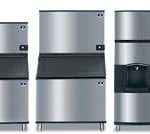
How Much Ice Do You Really Need? Estimating Volume for Your Business Operations
Whether you run a restaurant, bar, cafe, or any other business that requires a consistent supply of ice, ensuring you have the right amount of ice on hand is crucial. Too little, and you’ll have dissatisfied customers and possible operational hiccups. Too much, and you’ll waste money on excessive storage and energy costs. To strike the perfect balance, let’s delve into how to estimate the ice volume your business truly needs.
COMPARE QUOTESUnderstanding Your Business Type and Ice Needs
Different types of businesses have different requirements when it comes to ice.
Restaurants: A typical restaurant can expect to use roughly 1.5 to 2 pounds of ice per meal. So, if you’re serving 100 meals a day, you’d need 150 to 200 pounds of ice daily.
Bars: Bars generally use more ice, especially if they serve a lot of chilled drinks. Expect to need around 3 pounds of ice per seat, particularly on busy nights.
Cafés: For places that specialize in cold drinks, such as iced coffees, a good rule of thumb is 2 to 3 pounds of ice per drink.
Hotels: For hotels offering ice machines for their guests, the typical usage is about 5 pounds of ice per guest room.
Factor in Peak Times
While your average daily usage is a good starting point, you should also account for peak times. This could be weekend nights for bars, lunchtime rush hours for cafes, or summer months for tourist-heavy areas. During these periods, your ice needs might double or even triple. Always ensure your ice machine can handle these peak demands.

Types of Ice and Their Usage
The kind of ice you need can also influence the volume:
- Cubed Ice: Most commonly used, it’s ideal for general cooling purposes, from soft drinks to cocktails.
- Flaked Ice: Preferred for presentations like seafood displays and for making blended drinks due to its softer consistency.
- Nugget Ice: Popular in healthcare settings and specific drink types, it’s softer and easier to chew than cubed ice.
Storage and Access
While estimating the amount of ice you’ll need daily, you also need to consider storage. Your storage bin should be large enough to store a day’s worth of ice, plus some extra to account for any unexpected spikes in demand. Additionally, consider how quickly the machine can produce ice. If your business sees a rush of customers at certain times, you’ll want a machine that can produce ice rapidly.
COMPARE QUOTESSafety Margin
Always add a safety margin to your calculations. A good practice is to add an extra 20% to your estimated daily ice needs. This ensures you won’t run out during unexpected busy periods or if there are any issues with the ice machine.
Regularly Review Your Ice Usage
Your business won’t stay the same size forever. As you grow, your ice needs will change. Make it a point to review your ice usage and needs at least once a year, or whenever there’s a significant change in your operations.
Correctly estimating your ice needs can make a massive difference in your operations and customer satisfaction. By understanding your daily requirements, considering peak times, and regularly reviewing your usage, you’ll ensure that you never leave a customer’s drink lukewarm. The right balance will not only enhance the customer experience but also ensure efficient operations and reduced costs.

Types of Ice Machines: Finding the Perfect Fit for Your Business
When it comes to fulfilling your business’s ice requirements, selecting the right type of ice machine is as essential as estimating the volume of ice you need. Different machines cater to various needs, production capacities, and types of ice. In this section, we’ll take a closer look at the various types of commercial ice makers available and their specific applications.
Commercial Ice Machines
These are the most commonly used ice machines in restaurants, bars, and cafes. They are designed to fit seamlessly into a commercial kitchen or behind a bar, with most models built for durability, efficiency, and relatively high-volume ice production.
Features:
- Typically produces between 50 to 2,500 pounds of ice per day.
- Can be modular (require separate storage bins) or self-contained (built-in storage).
- Most models offer energy-saving features to reduce operational costs.
Industrial Ice Machines
Industrial ice machines are heavy-duty units designed for large-scale ice production. They’re essential for industries like fisheries, poultry, or any sector requiring substantial ice amounts daily.
Features:
- Produces large quantities, often exceeding 20,000 pounds of ice per day.
- Designed for continuous, 24/7 operation.
- Typically includes features to ensure consistent ice quality and size.
Nugget Ice Makers
Known for producing the soft, chewable ice nuggets loved by many, nugget ice makers have found their niche in healthcare settings, as the ice is easy to chew and less likely to cause choking. They’re also popular in restaurants and bars for specific types of beverages.
Features:
- Produces soft, chewable ice that’s a mix between flake and cube ice.
- Suitable for patient care, but also for cocktails and sodas.
- Available in both commercial and industrial sizes.

Flake Ice Machines
Perfect for display cooling (like seafood displays) or packing fresh produce, flake ice machines produce small, soft flakes of ice. These are also preferred for blended cocktails because the ice breaks down smoothly without causing wear on the blending equipment.
COMPARE QUOTESFeatures:
- Produces thin, small flakes of ice.
- Ideal for presentation cooling or therapeutic needs in healthcare settings.
- Typically comes in commercial sizes, but larger industrial models are also available.
Undercounter Ice Machines
For businesses with limited space, such as small bars or cafes, undercounter ice machines are a godsend. They fit neatly under a standard counter, providing easy access without consuming valuable floor space.
Features:
- Compact design ideal for limited spaces.
- Produces between 50 to 350 pounds of ice daily, depending on the model.
- Most produce cubed ice, but some models offer flake or nugget ice.
Specialty Ice Makers
Apart from the standard offerings, there are machines designed for very specific needs, such as gourmet ice makers for upscale bars or restaurants. These produce clear, large ice cubes perfect for high-end spirits or cocktails.
Features:
- Produces large, clear ice cubes or unique shapes.
- Designed for premium beverages where the quality of ice can make a significant difference.
The right ice machine can streamline your operations, reduce costs, and ensure customer satisfaction. But to select the perfect ice machine, you need to understand your business needs, daily ice volume requirements, and the type of ice best suited for your operations. With this knowledge, you can invest in the perfect ice machine that caters to all your needs.
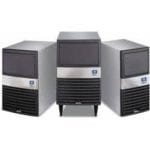
How to Determine Your Business’s Ice Requirements
It’s crucial to ensure that you never run short on ice, especially during peak business hours. Here’s a simple guide to help you evaluate how much ice you might need:
- Estimate Peak Usage: For restaurants, the busiest hours are typically lunch and dinner times. During these hours, how many customers do you serve on average? A general rule of thumb for restaurants is to have about 1.5 lbs of ice per meal served.
- Factor in Non-Peak Usage: Even during off-hours, employees may need ice for various tasks. Ensure you have a steady supply throughout the day.
- Special Events or Promotions: If you occasionally host events or have special promotions, these can drastically increase your ice needs. It’s always better to overestimate than underestimate.
- Type of Drinks Served: Iced drinks such as smoothies or cocktails may require more ice than soft drinks or water. Factor in your menu offerings when calculating.
- Emergency Buffer: Always factor in a buffer for emergencies or unforeseen high-demand days. An additional 20% over your estimated requirement is a good starting point.
Beyond Quantity: Ice Quality Matters
Different businesses have different requirements when it comes to the type and quality of ice:
- Nugget Ice: This type of ice is soft and chewable, making it ideal for healthcare settings. Bars and casual dining restaurants also prefer nugget ice because it quickly cools beverages and is easy on blender blades.
- Cube Ice: A versatile choice, cube ice is ideal for a wide range of applications from cooling drinks in restaurants to packing seafood in a market.
- Flake Ice: This soft and moldable ice type is perfect for presentation purposes. It’s often used in seafood displays or salad bars to keep items cold.
- Crescent Ice: With its unique shape, crescent ice is less likely to clump together. It’s especially useful for drinks as it displaces more liquid than other types, reducing the number of refills required.
Maintenance and Longevity
To get the most out of your ice machine and ensure you have a consistent ice supply, regular maintenance is essential. Here are some quick tips:
- Clean Regularly: Ice machines should be cleaned and sanitized every 6 months to prevent mold and bacterial growth.
- Replace Water Filters: Depending on your water source, minerals can build up and affect the taste of your ice. Change filters regularly.
- Positioning: Ensure the machine is in a cool, dry place, away from direct sunlight or heat-producing equipment. This will increase efficiency and prolong the machine’s life.
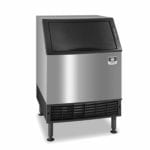
Choosing the right ice machine and understanding your needs can save you from potential operational hiccups down the road. With proper planning and understanding, you can ensure your business operations run smoothly and customers are always served with the best.
COMPARE QUOTESWarranties and Guarantees: The Assurance Behind Commercial Ice Machines
The purchase of a commercial ice machine represents a significant investment for any business. Beyond the upfront cost, the operational efficiency, longevity, and reliability of these machines have direct implications for operational expenses and customer satisfaction. Herein lies the importance of warranties and guarantees—they serve as a promise from manufacturers about the quality and reliability of their products.
The Value of a Warranty
A warranty, in essence, is a manufacturer’s commitment to stand behind their product. It provides assurance that if something goes wrong due to defects in materials or workmanship, the manufacturer will either repair, replace, or compensate for the faulty item, usually within a specified period. Here’s why this assurance is vital for businesses:
Cost Savings: A comprehensive warranty can save businesses substantial sums in potential repair or replacement costs. Especially for pricier components of a commercial ice machine, having warranty coverage can mean the difference between a minor inconvenience and a major unexpected expense.
Peace of Mind: Knowing that the manufacturer supports their product can offer businesses peace of mind. It can be reassuring to know that any unexpected malfunctions will be addressed, allowing the business to focus on its core operations without undue concern about equipment reliability.
Indication of Quality: Generally, a more extended and comprehensive warranty suggests that the manufacturer has confidence in the durability and reliability of their product. It can often be an indirect indicator of the product’s quality and the manufacturer’s commitment to customer satisfaction.
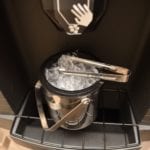
Points to Consider with Ice Machine Warranties
Duration: Warranties come with varying durations. It’s essential to understand how long the warranty lasts and what specific parts or functions are covered for extended periods. Some components might have longer coverage than others.
Coverage: Not all warranties are created equal. While some might cover almost any malfunction or issue arising from regular use, others might be more limited, covering only specific parts or problems. Thoroughly read the warranty terms to understand the scope of coverage.
Transferability: If you ever decide to sell or transfer the ownership of your ice machine, it’s good to know if the warranty is transferable to the new owner. This can also add value to the resale of the equipment.
Claim Process: Understand the process for making a warranty claim. Some manufacturers might require regular maintenance checks or specific conditions to keep the warranty valid. Be aware of any such conditions to ensure you don’t inadvertently void your warranty.
The warranty behind a commercial ice machine is more than just a piece of paper. It’s a representation of the manufacturer’s commitment to quality and a safety net for businesses. Before finalizing any purchase, always take the time to understand the warranty’s terms and ensure it provides the protection and assurance your business needs.
COMPARE QUOTESHow Much Do Commercial Ice Makers Cost?
The cost of commercial ice makers varies widely based on capacity, type, brand, and other features. Below is a breakdown to give you an idea:
- Modular Ice Machines: These are large units that produce large quantities of ice. They don’t have built-in storage bins, so you’ll need to buy these separately. Prices can range from $2,000 to $5,000.
- Undercounter Ice Machines: Suitable for smaller establishments, these machines fit under counters and usually include a storage bin. They typically cost between $1,500 and $3,500.
- Countertop Ice Dispensers: Mostly seen in healthcare settings due to the preference for nugget ice, these can range from $2,000 to $4,000.
- Combination Ice Machines: These machines can produce different types of ice and typically come with water dispensers. Prices can hover between $2,500 and $6,000.
Cost of Usage: The cost of running an ice machine can depend on water and electricity rates in your area, as well as the efficiency of the machine you select. On average, however, an ice machine uses about 10% of a restaurant’s water usage for about $50 to $100 per month and consumes energy equivalent to approximately $10-$20 monthly, depending on the machine’s size and usage frequency.
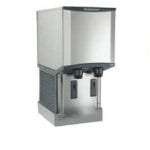
Top Commercial Ice Makers to Consider in 2023
When investing in a commercial ice maker, ensuring you choose a top-performing and efficient model is crucial. Here are the top names in 2023:
- Ice-O-Matic: Known for its energy-efficient designs and long-lasting machines.
- Manitowoc: A trusted name in the ice-making industry, they offer a wide range of sizes and types.
- Hoshizaki: Renowned for their crescent ice and top-notch durability.
- Scotsman: They produce high-quality nugget ice machines and have a reputation for reliability.
- Blue Air: An emerging name that offers cost-effective solutions without compromising on quality.
- U-Line: Best known for their undercounter ice makers, they blend efficiency with sleek designs.
- Maxx Ice: A reliable choice for businesses on a budget but still seeking quality.
- Follett: Their machines are known for being innovative and often feature advanced technologies for better ice production.
- Koolaire: A subsidiary of Manitowoc, they offer budget-friendly options with decent performance.
- True T-19: Though primarily known for refrigeration, their ice machines have gained popularity due to robust performance and longevity.
Making the right choice in commercial ice makers can significantly affect your operational costs and efficiency. Taking time to research and understand your specific needs can lead to long-term savings and smoother business operations.
COMPARE QUOTESEnvironmental Considerations: The Eco-Friendly Side of Ice Machines
The Environmental Footprint of Ice Machines
Just like any other mechanical device, commercial ice machines have an environmental footprint. This footprint can be understood in terms of energy consumption, water usage, and refrigerants involved in the cooling process.
- Energy Consumption: A significant amount of electricity is used to freeze water and produce ice. Ice machines that run inefficiently or that are larger than necessary for the business’s needs can consume excessive amounts of energy.
- Water Usage: Water is obviously a fundamental resource for producing ice. Inefficient ice machines may waste more water than they produce in the form of ice, leading to higher water bills and unnecessary environmental strain.
- Refrigerants: Many commercial ice machines use refrigerants to cool down the water and turn it into ice. Some of these refrigerants can be harmful to the environment, particularly if they are not managed or disposed of properly.
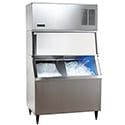
Making Your Ice Machine Usage Eco-Friendly
As businesses grow increasingly aware of their environmental impact, there are several steps that can be taken to make ice machine usage more eco-friendly:
- Choose Energy-Efficient Machines: Look for ice machines that are ENERGY STAR certified. These machines meet specific energy-efficiency criteria set by the U.S. Environmental Protection Agency (EPA). On average, ENERGY STAR certified ice machines are 15% more energy-efficient and 10% more water-efficient than standard models.
- Regular Maintenance: Keeping your ice machine in top working condition can ensure it runs efficiently. Regularly cleaning the machine, checking for leaks, and making sure it’s well-maintained can reduce waste and excessive energy consumption.
- Opt for Eco-Friendly Refrigerants: With growing concerns about climate change, many manufacturers are transitioning to more environmentally friendly refrigerants. When purchasing a new machine, check what type of refrigerant it uses and opt for those with a lower Global Warming Potential (GWP).
- Water-Saving Features: Some modern ice machines come equipped with features designed to minimize water waste. This might include water recycling systems or settings that adjust based on the external environment.
- Consider the Size: It’s crucial to select an ice machine that fits the needs of your business. Oversized machines can lead to unnecessary energy consumption, while undersized machines might run continuously, trying to meet the demand. By accurately estimating your ice needs, you can choose a machine that’s just right for your operations.
While ice machines play an indispensable role in many businesses, it’s essential to recognize their environmental impact. By making informed decisions and opting for eco-friendly practices and machines, businesses can reduce their environmental footprint while still meeting their operational needs.
COMPARE QUOTESSafety Precautions: Operating and Handling Commercial Ice Machines Safely
When it comes to running a business, the safety of employees and customers is paramount. Commercial ice machines, like other equipment, come with their own set of safety considerations. Here’s a comprehensive look at ensuring the safe operation and handling of these machines.
1. Installation Safety
- Proper Ventilation: Ensure the ice machine is installed in a well-ventilated area. Overheating can be a concern if ice machines are positioned in tight spaces without adequate airflow.
- Avoid Water Source Proximity: While ice machines need water, they shouldn’t be directly next to water sources like sinks to avoid water spillage, which could cause electrical hazards.
- Stable Ground: Position the machine on flat, stable ground. This ensures that the machine operates smoothly and reduces the risk of it tipping over.
2. Electrical Safety
- Regular Inspection: Check power cords for any signs of wear, tear, or damage. Frayed or exposed wires can pose a significant electrical hazard.
- Grounding: Always ensure that your ice machine is correctly grounded to prevent potential electric shocks.
- Avoid Overloading Circuits: Ice machines can draw significant power, especially during peak ice-making times. Ensure they’re connected to a circuit that can handle the load.
3. Operational Safety
- Cleanliness: Regularly clean and sanitize the ice machine. Dirty ice machines can become breeding grounds for bacteria, posing a health risk.
- Protective Gear: If working inside the machine or performing maintenance, always wear protective gloves to safeguard against cold burns or any sharp components.
- Train Employees: Ensure that all employees who will operate the machine are adequately trained. They should be familiar with the machine’s functions, safety features, and emergency shut-off procedures.
4. Preventing Slips and Falls
- Immediate Cleanup: If ice spills onto the floor, it should be cleaned up immediately. Wet or icy floors can quickly become slip hazards.
- Floor Mats: Consider placing non-slip floor mats around the ice machine area to provide additional traction.
5. Maintenance Safety
- Scheduled Maintenance: Regularly schedule professional maintenance checks. A malfunctioning ice machine can pose various risks, from electrical hazards to inefficient operation.
- Shut Down During Maintenance: Always ensure the machine is powered off and unplugged during any maintenance or repairs.
- Use Authorized Technicians: For any repairs or significant maintenance tasks, always hire or consult with technicians authorized by the ice machine’s manufacturer.
While commercial ice machines are invaluable assets for many businesses, it’s essential to approach their operation and maintenance with safety in mind. By following these guidelines, businesses can ensure the safety of both their staff and their customers.

Water Filtration Systems: Ensuring Optimal Quality and Clarity for Your Ice
The quality of ice produced by your commercial machine isn’t solely dependent on the ice machine itself. The water used to form that ice plays a pivotal role in determining the clarity, taste, and overall quality of the final product. That’s where water filtration systems come into play. These systems ensure that the water feeding into your ice machine is pure and devoid of impurities that can compromise the ice’s quality.
COMPARE QUOTESThe Significance of Filtered Water for Ice Production
Taste and Odor-Free Ice:
Unfiltered water can often contain minerals, chlorine, and other contaminants. These elements can impart a distinct taste or odor to the ice. Using filtered water ensures that the ice remains neutral in flavor, vital for businesses like restaurants and bars where the ice’s taste can affect beverages’ overall flavor.
Crystal Clear Ice:
Impurities in water can cause ice to form cloudy or with visible specks. Clear ice is not only aesthetically pleasing but is also a sign of purity. Especially in upscale establishments or where the presentation is paramount, the clarity of ice can make a significant difference.
Extended Equipment Lifespan:
Minerals and other particles present in unfiltered water can lead to scaling and accumulation within the ice machine, reducing its efficiency over time and potentially leading to breakdowns. By using filtered water, businesses can enhance the longevity and operational efficiency of their ice machines.

Popular Water Filtration Systems for Commercial Ice Machines
Carbon Filters
One of the most common types, carbon filters, are effective at removing chlorine, volatile organic compounds (VOCs), and other odors from water, ensuring a neutral taste.
Sediment Filters
These filters are designed to capture and remove larger particles like sand, silt, and rust, which can be present in the water. They are particularly useful in areas where the water has high sediment content.
Reverse Osmosis Systems
This advanced filtration method uses a semipermeable membrane to remove a wide variety of contaminants, including minerals, bacteria, and pesticides, resulting in highly purified water.
Scale Inhibitor Systems
In areas with hard water, scale buildup can be a significant issue. These systems introduce a scale inhibitor into the water, which binds with the minerals, preventing them from accumulating inside the machine.
Multi-Stage Filtration Systems
Some businesses opt for systems that combine various filtration methods to ensure the highest purity levels. These systems may utilize a combination of sediment filters, carbon filters, and other technologies to deliver optimal water quality.
When choosing a water filtration system for your commercial ice machine, consider factors like the local water quality, the volume of ice you produce, and any specific quality benchmarks you aim to achieve. Investing in a quality filtration system is not only about producing better ice—it’s also a move that can save on maintenance costs and extend the life of your equipment.
COMPARE QUOTES